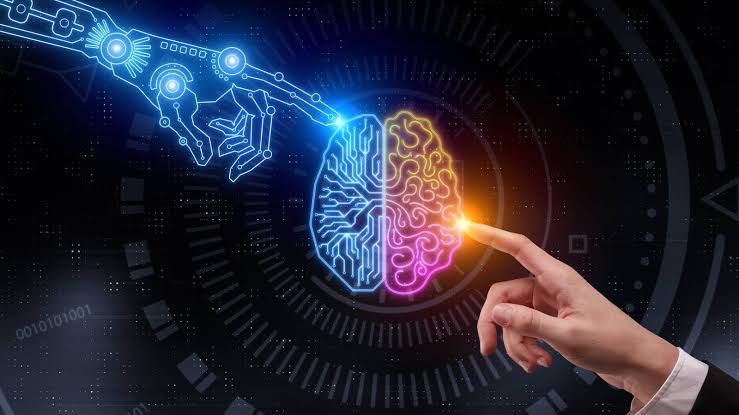The artificial intelligence is a science, and like all examples has its subdivisions. See below, which are the types of artificial intelligence according to their capabilities and functionalities within the spectrum of approximation between the functioning of machines and the human brain.
Artificial intelligence and its types
Since AI research aims to make machines “emulate” human-like functioning, the degree to which an AI system can replicate human capabilities is used as the criterion for determining the types that exist.
Depending on how a machine compares to humans in terms of versatility and performance, artificial intelligence can be classified into one or several types of AI.
The greater the ability to perform more human-like functions with equivalent levels of proficiency will be considered a more evolved type of artificial intelligence, while those with limited functionality and performance is considered a simpler and less evolved type.
AI capability
1. Reactive machines
These are the oldest forms of AI systems with limited capacity. They mimic the ability of the human mind to respond to different types of stimuli. The machines do not have memory-based functionality.
In short, it means that they cannot use previously acquired experiences to inform their present actions , that is, these machines do not have the ability to “learn”. Its usability comes down to automatically responding to a limited set or combination of inputs. His classic example is the Deep Blue of IBM that beat Garry Kasparov in a chess duel.
2. Limited memory
Machines with limited memory are those that, in addition to having the resources of purely reactive machines, are also capable of learning from historical data to make decisions. Almost all existing apps that we know of fall into this artificial intelligence category.
All current systems, like those that use deep learning , are trained by large volumes of training data that are stored in their memory to form a reference model for solving future problems. From chatbots and virtual assistants to autonomous vehicles, all are powered by limited memory AI.

3. Theory of mind
For now, it works as a concept or a work in progress. Theory of mind-based artificial intelligence is the next level of AI systems that researchers are committed to innovating.
A mental-level theory will be able to better understand the beings it is interacting with, discerning their needs, emotions, beliefs and thought processes.
While artificial emotional intelligence is already a developing industry and an area of interest to leading computer science researchers, reaching this level will also require the development of other branches of AI.
To truly understand human needs, AI machines will have to perceive humans as individuals whose minds can be shaped by many factors, in fact “understanding” humans.
4. “Self-aware”
If theory of mind is a work-in-progress concept, self-conscious AI is a hypothetical formulation. This type of AI will not only be able to understand and evoke emotions in those it interacts with, but it will also have emotions, needs, beliefs, and potentially desires of its own.
It’s the kind of artificial intelligence that technology pessimists distrust. While the development of self-awareness could potentially boost our progress as a civilization by leaps and bounds, it could also lead to catastrophe — the movie “The Matrix” and the domination of machines.
Once self-aware, the AI would be able to come up with ideas like self-preservation, which could directly or indirectly mean the end of humanity, as such an entity could easily overwhelm any human being’s intellect and plot elaborate schemes to tame or enslave humanity.
Technical and functional classifications
5. Narrow artificial intelligence (ANI)
This type of artificial intelligence represents all of the existing AI, including even the most complicated and capable AI ever created. ANI refers to AI systems that can only perform a specific task autonomously, using human-like resources.
These machines cannot do anything more than what they are programmed to do and therefore have a very limited or narrow range of competencies. Even the most complex AI that uses machine learning and deep learning to teach itself falls under the ANI.
6. Artificial General Intelligence (AGI)
General artificial intelligence is the AI agent’s ability to learn, perceive, understand, and fully function as a human being. These systems will be able to independently build multiple competencies and form connections and generalizations across domains, greatly reducing the time required for training.
This will make AI systems as capable as humans by replicating our cross-functional capabilities.
7. Artificial Superintelligence (ASI)
As far as we can imagine, it would be the limit of AI development. The development of artificial superintelligence will likely mark the pinnacle of AI research, as AGI will become by far the most capable form of intelligence on the planet.
ASI, in addition to replicating the multifaceted intelligence of human beings, will be extremely better at everything it does because of overwhelmingly larger memory, faster data processing and analysis, and decision-making capabilities.
The development of AGI and ASI will lead to a scenario known as uniqueness. And while the potential of having such powerful machines at our disposal seems appealing, these machines can also threaten our existence or, at the very least, our way of life.
These are the 7 classifications designed to determine the level of an artificial intelligence, if we think about capacity, we are halfway through and evolving, but when we take into account the technical classification, we are in the first of the 3 stages and it will take some time to (what if) get to the next ones.
